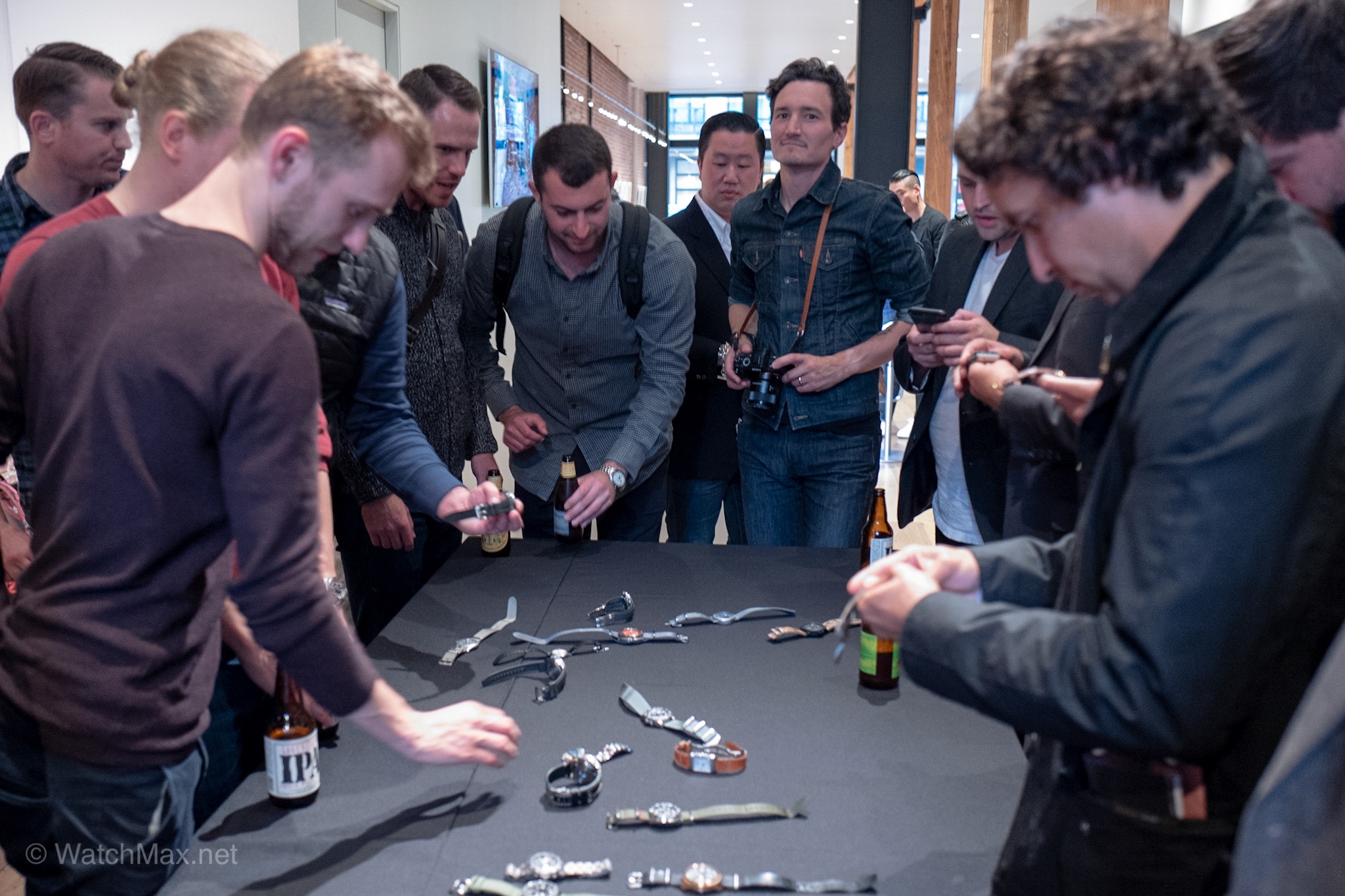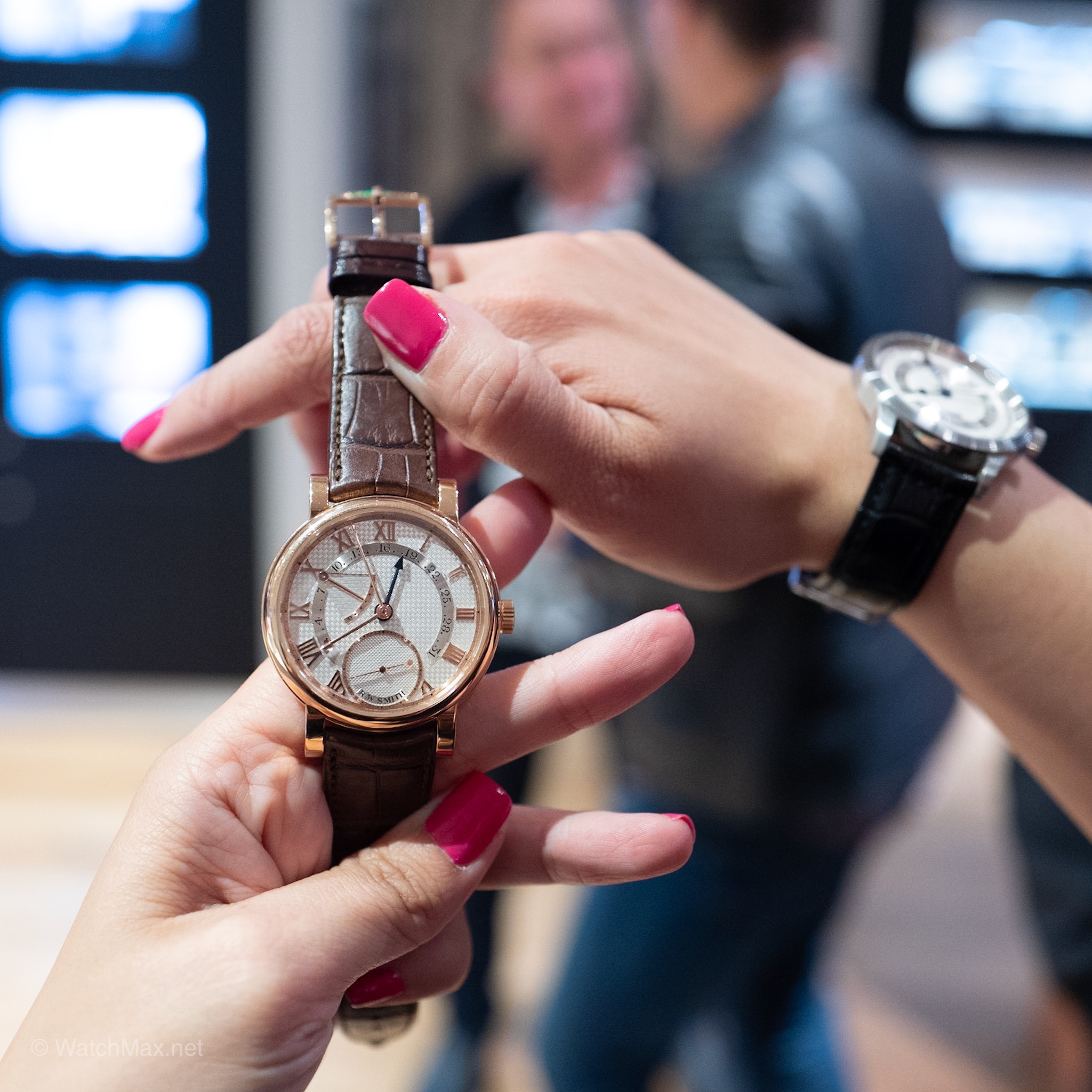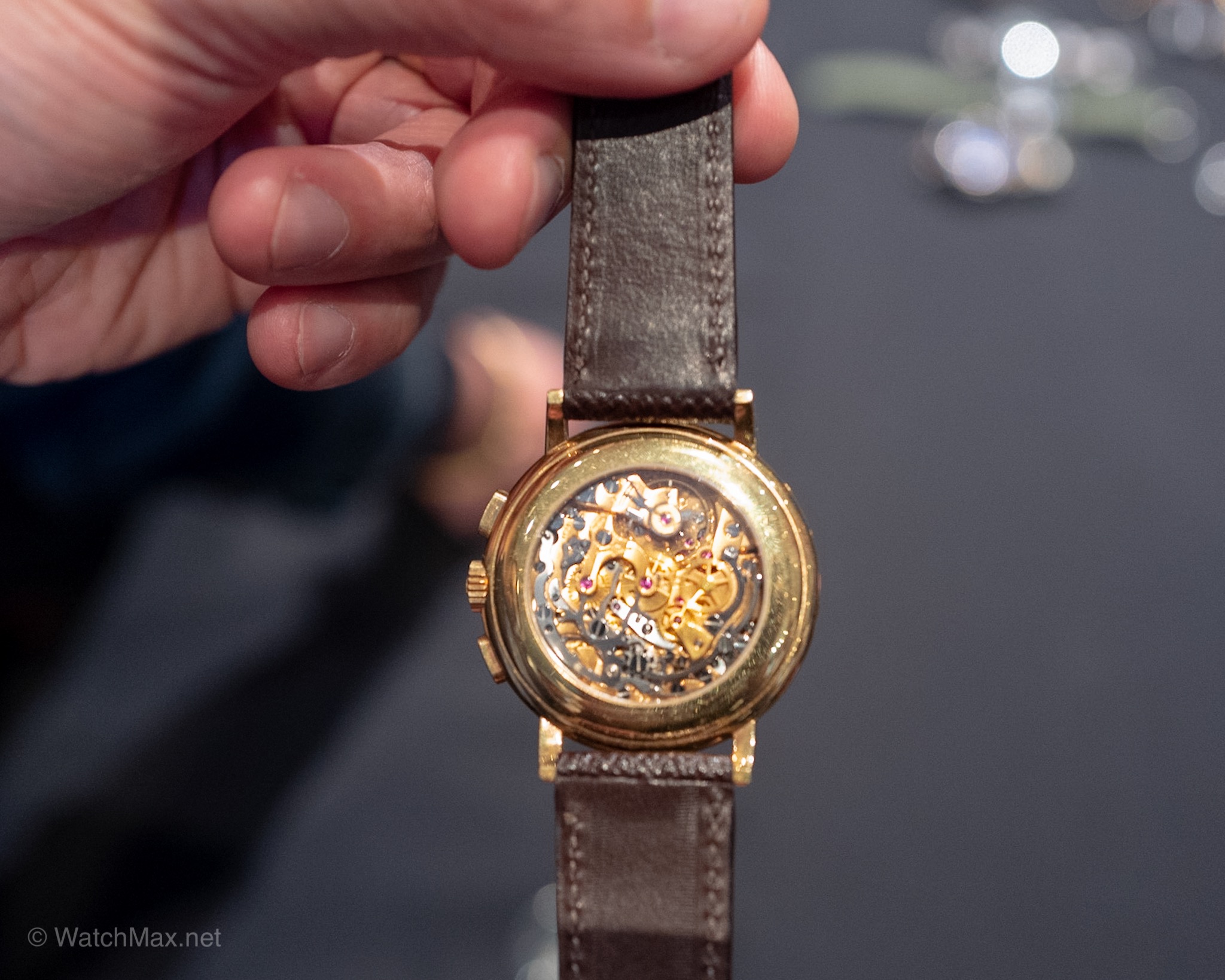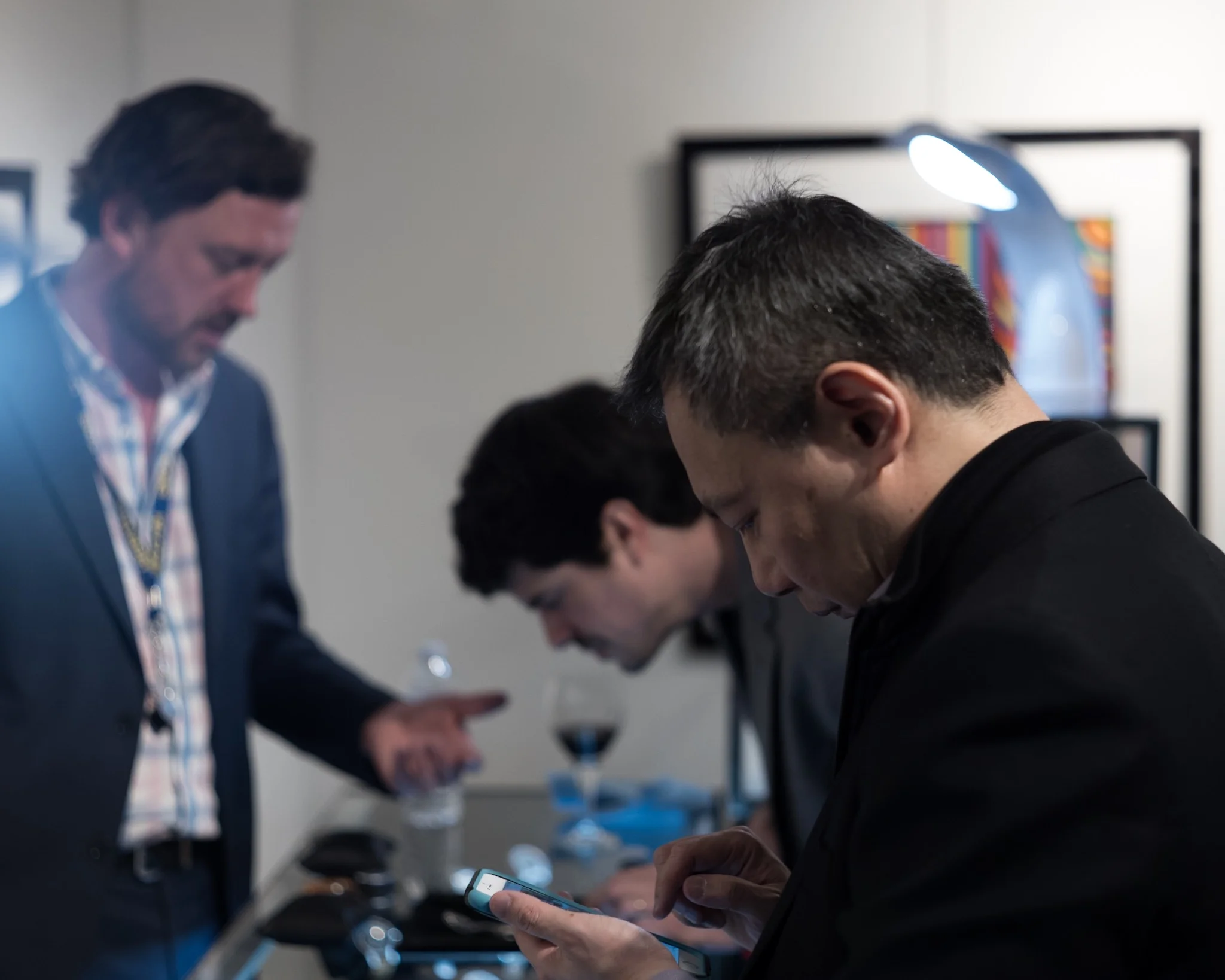RedBar SF recently teamed up with Leica Store SF for another watch meetup. This time, the event was planned to coincide with the Worn & Wound Wind^Up San Francisco fair that I introduced here. In this post I briefly summarize this event and primarily discuss the deep relationship that watch collecting has with cameras and in particular Leica cameras shooters and collectors.
Zach Weiss, Worn & Wound co-founder, talking to an attendee - shot with Leica SL with 75 mm f1.4 Leica R lens
Besides watches and triathlon, my other hobby is photography. It is something I have taken more seriously as my passion for collecting and writing about watches grew. It’s somewhat of an expected thing, as if you start writing about any topic, trying to complement the words with great photography is a natural next step.
While I started as a Nikon shooter, and continues to be, I have increasingly in the past three years transitioned to shoot with Leica cameras. It’s hard to ignore or not hear about the Leica brand if you start researching photography or start reading and watching leading camera bloggers and YouTube stars. It’s a brand that you will find elicit polarizing viewpoints: positive and negative.
Blake Malin, Worn & Wound co-founder - shot with Leica M10 with 50 mm f1.4 Summilux
To understand Leica and the mystique associated with its cameras and lenses, it’s important to understand its history. Briefly, Leica as a brand is over 100 years old. It is still located where it was established, in the small town of Wetzlar Germany, as an optics company creating microscope lenses and other optical instruments.
As a camera brand, Leica Camera AG as we know it started with Oskar Barnack’s creation of the ultra-portable (even for today) Leica I system in 1913. A revolutionary camera at that time, the Leica I and subsequent II, III, and variants help solidified the de-facto standard 35 mm format that we call “Full Frame” today.
My pristine vintage Leica I F set - shot with Leica Q
While the Leica I help established the brand as a leading manufacture of photography equipment, it’s the Leica M and precisely the M3 and subsequent releases that pushed it into cult status. The Leica M3, introduced in 1954, is so good and so in demand still, that various used vintage models (sometimes over 50 years old) cost more today than leading brand new digital cameras.
Leica followed the M3 with various updates and in 2006 created the first digital M: the M8. The most recent version of the digital M is the M10, which I use as my daily camera. For me, the M10, like all of the digital M systems blend mechanical perfection with a modern sensor of the day that can push the ISO sensitivity to its limits while producing gorgeous film-like files.
My vintage Leica M3 single stroke with 35 mm f2.5 Summarit - shot with Leica Q
Leica fans tend to note that the reason they shoot the M is because of not only the results you can achieve but also because you can use any of the lenses ever produced by Leica over its history (some adapters might be required) and also because it brings photography to its pure essence.
Creation of images using a device that requires you to think ahead and be deliberate about your choices about aperture, shutter speed, and ISO. All are inputed via tactile mechanical knobs, and encapsulated into a device that is meant to last forever.
But what is the connection between cameras and watches? The obvious answer is that a fine mechanical timepiece and a fine camera has a lot of craftsmanship embedded herein. This is the case for Leica cameras, particularly the M models which are all made by hand in Wetzlar. Both are tools and devices are made to last practically forever which is a testament of the attention to quality by the makers.
At the Leica Store SF for the second year in a row the RedBar event attracted lots of watch enthusiasts. Many coming from the Wind^Up event which had ended minutes earlier and was located less than a mile away.
Attendee testing the Leica M10 - shot with Leica SL with 75 mm f1.4 Leica R lens
The Leica Store SF staff, themselves watch enthusiasts, were ready to welcome us. The president of the store, Sean Cranor, was kind enough to allow me to try the SL with a fast R lens and than the standard 24-90 mm zoom. The feel of that camera on hand is hard to describe.
Could this be one that gets me to switch entirely to all Leica systems? Not sure, however, I am certainly contemplating the idea… I first need to see its macro capabilities and whether my current flash setup will transfer.
I of course took along my Leica M10 with a vintage 50 mm f1.4 Summilux which I used to shoot many of the photos you see here. Wide open with no flash, the results you get for portraits are contrasty, dreamy and unbeatable. That’s the Leica colors, bokeh, and unique look.
To capture macro shots of the watches present, I always bring my Leica Q. Besides being the perfect street and wide angle shooter, the Q has a macro 1:2 mode which does a decent job on watches. I was glad to bring it to capture what was the rarest (and perhaps coolest) watch I have seen at any RedBar SF: a Roger Smith Tourbillon in rose gold.
And such a fitting watch to be brought at any event but especially at this RedBar event celebrating our love for mechanical perfection at any cost. Like some of the cameras present, Roger Smith creates his watches by hand (movement, case, finishing). While the resulting watch appears simple, in the eyes of a connoisseur it's perfection. Same for my Leica M10 and other M-series.
Surely there are CNC-manufactured watches produced today that will outperform the Roger Smith. Same for modern digital cameras, think of the many recent Sony Alpha series or even Leica’s own Q model. So why should one be fascinated with hand assembly and finishing and pay more for it? Does that make sense? Nope.
But acquiring such objects (a Roger Smith watch or a Leica M10) is not about performance only. It's about sentimentality, about returning to first principles, and about capturing human ingenuity and manual labor.
For me, this means the object has soul. A bit of the soul of its maker perhaps. And using it means creating a connection with the maker and our own humanity. And that, for me is priceless…



















RedBar SF recently teamed up again with Leica Store SF for another watch meetup. This time, the event was planned to coincide with the Worn & Wound Wind^Up San Francisco fair that I introduced here. In this post I briefly summarize this event and primarily discuss the deep relationship that watch collecting has with cameras and in particular Leica cameras shooters and collectors.